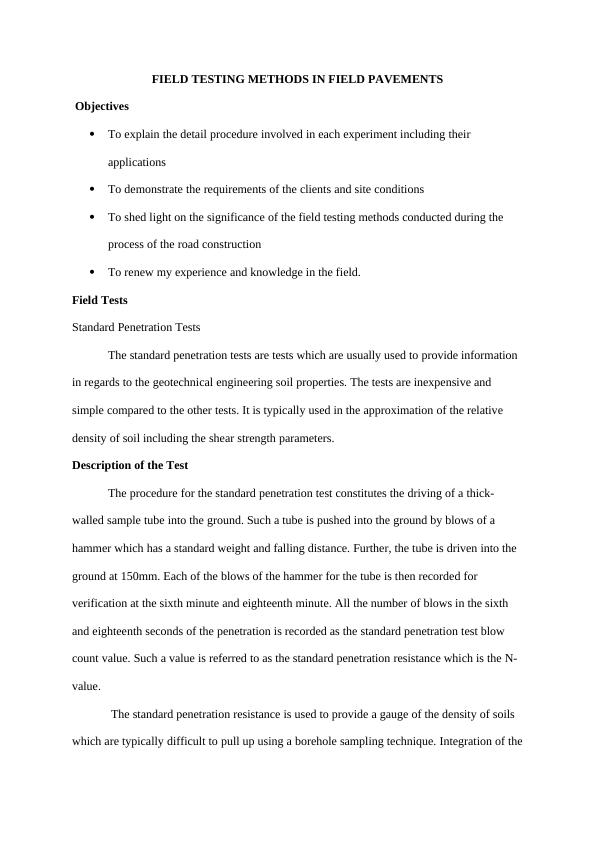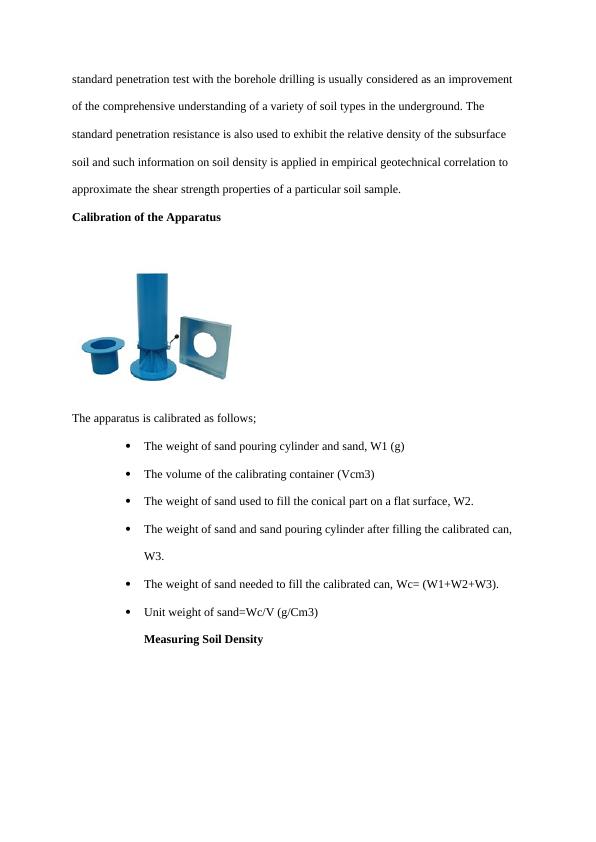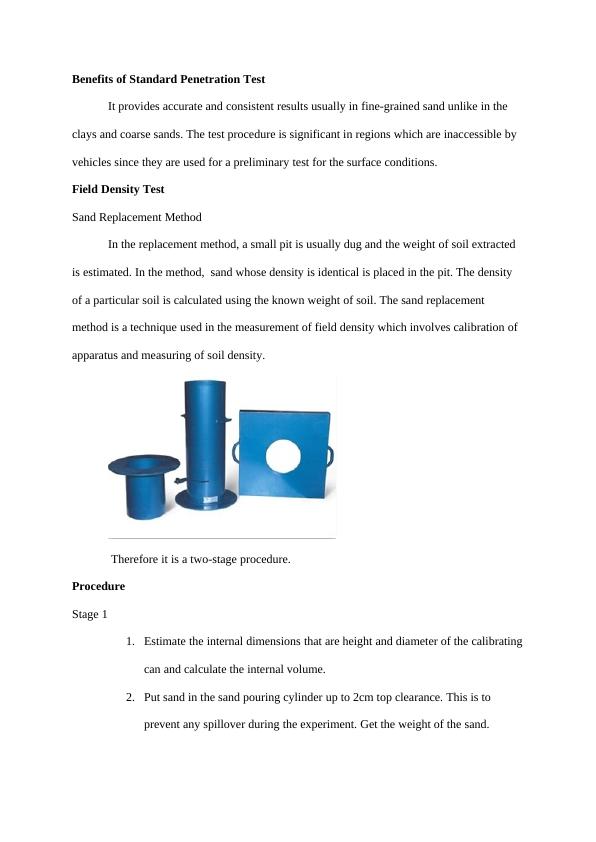Ask a question from expert
Report on Field Testing Methods in Field Pavements
13 Pages2930 Words241 Views
Added on 2020-05-08
Report on Field Testing Methods in Field Pavements
Added on 2020-05-08
BookmarkShareRelated Documents
FIELD TESTING METHODS IN FIELD PAVEMENTS Objectives To explain the detail procedure involved in each experiment including their applicationsTo demonstrate the requirements of the clients and site conditionsTo shed light on the significance of the field testing methods conducted during the process of the road constructionTo renew my experience and knowledge in the field.Field TestsStandard Penetration TestsThe standard penetration tests are tests which are usually used to provide information in regards to the geotechnical engineering soil properties. The tests are inexpensive and simple compared to the other tests. It is typically used in the approximation of the relative density of soil including the shear strength parameters. Description of the TestThe procedure for the standard penetration test constitutes the driving of a thick-walled sample tube into the ground. Such a tube is pushed into the ground by blows of a hammer which has a standard weight and falling distance. Further, the tube is driven into the ground at 150mm. Each of the blows of the hammer for the tube is then recorded for verification at the sixth minute and eighteenth minute. All the number of blows in the sixth and eighteenth seconds of the penetration is recorded as the standard penetration test blow count value. Such a value is referred to as the standard penetration resistance which is the N-value. The standard penetration resistance is used to provide a gauge of the density of soils which are typically difficult to pull up using a borehole sampling technique. Integration of the

standard penetration test with the borehole drilling is usually considered as an improvement of the comprehensive understanding of a variety of soil types in the underground. The standard penetration resistance is also used to exhibit the relative density of the subsurface soil and such information on soil density is applied in empirical geotechnical correlation to approximate the shear strength properties of a particular soil sample.Calibration of the ApparatusThe apparatus is calibrated as follows; The weight of sand pouring cylinder and sand, W1 (g)The volume of the calibrating container (Vcm3)The weight of sand used to fill the conical part on a flat surface, W2.The weight of sand and sand pouring cylinder after filling the calibrated can, W3.The weight of sand needed to fill the calibrated can, Wc= (W1+W2+W3).Unit weight of sand=Wc/V (g/Cm3)Measuring Soil Density

The procedure of Standard Penetration Test1.Place a tripod on the test hole and arrange the unit2.Enable the spoon to rest at the bottom of the hole dug.3.Push the spoon using blows from a hammer which falls 30 inches up to 18 inches to penetrate through the hole.4.Record all the blows required effect 7 inches of penetration and the first 7 inches of penetration is referred to as the seating drive.5.Record again the second and third 7 inches of the seating drive and such value is called the penetration resistance value (N-of the soil)Precautions During the Test1.The driving shoe should be replaced using a solid 70-degree cone, and this is especially when the test is to be conducted in gravely soils.2.When the tube sample has penetrated less than 27 mm under 60 blows, the dropping weight should be halted.3.The sides of the hoe should be supported using drilling mud.4.Under circumstances in which the soil loosens below the water table, a lot of care has to be taken into consideration to prevent the entry of water via the bottom of the bore.

Benefits of Standard Penetration TestIt provides accurate and consistent results usually in fine-grained sand unlike in the clays and coarse sands. The test procedure is significant in regions which are inaccessible by vehicles since they are used for a preliminary test for the surface conditions.Field Density TestSand Replacement MethodIn the replacement method, a small pit is usually dug and the weight of soil extracted is estimated. In the method, sand whose density is identical is placed in the pit. The density of a particular soil is calculated using the known weight of soil. The sand replacement method is a technique used in the measurement of field density which involves calibration of apparatus and measuring of soil density. Therefore it is a two-stage procedure.ProcedureStage 11.Estimate the internal dimensions that are height and diameter of the calibratingcan and calculate the internal volume.2.Put sand in the sand pouring cylinder up to 2cm top clearance. This is to prevent any spillover during the experiment. Get the weight of the sand.

End of preview
Want to access all the pages? Upload your documents or become a member.
Related Documents
The relative density of granularlg...
|7
|1398
|11